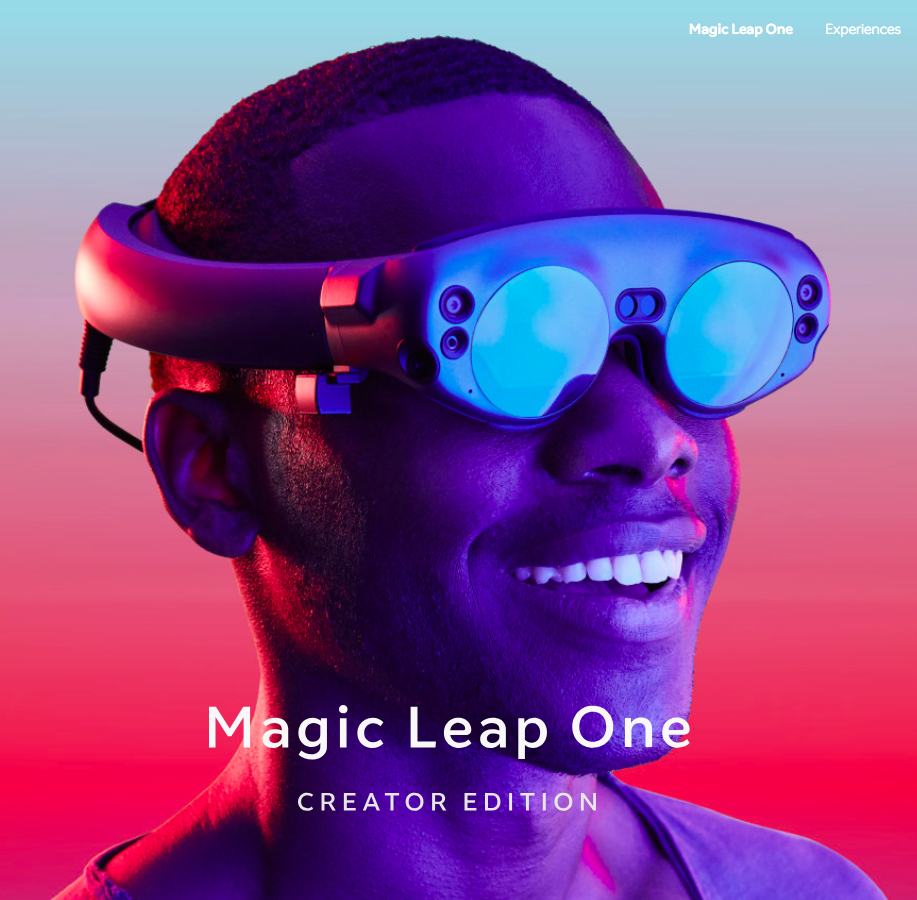You have /5 articles left.
Sign up for a free account or log in.
 The Magic Leap augmented reality (AR) headset is finally available. (If you live in a few select cities). After years of hype, the Florida startup that has raised $2.3 billion in capital (with Google being a big investor), is finally releasing its first device.
The Magic Leap augmented reality (AR) headset is finally available. (If you live in a few select cities). After years of hype, the Florida startup that has raised $2.3 billion in capital (with Google being a big investor), is finally releasing its first device.
The cost is $2,295. The device is intended mostly for developers who might write applications for what Magic Leap hopes will be a new augmented reality ecosystem.
Does any of this matter to higher ed?
If you don’t know about Magic Leap, then congratulations. Avoiding the tech hype machine is an accomplishment.
The basic story is that Magic Leap, the company, has done a masterful job of raising money and of stoking public interest. Up until this week, they had not released any product. In interviews and slick demos, Magic Leap promised to make a giant leap in augmented (or mixed) reality.
AR is different from virtual reality (VR), in that the 3D digital images are superimposed on the real world. An existing AR (or mixed-reality) device is the HoloLens from Microsoft, which came out in 2016.
Maybe your school has been playing with a HoloLens rig? There has certainly been interest in higher education about how augmented reality may aid instruction in hands-on and lab courses.
Getting Magic One Leap devices into hands of higher ed people would be great. I’d love the opportunity to experiment with the technology. To figure out what sorts of learning apps could be developed. It would be cool to play around with extending hands-on lab assignments and tactile learning to online education.
So by all means, I hope that Magic Leap is set to do some higher ed outreach. Magic Leap, if you are listening, please send one to Hanover, NH.
What I also very much hope is that all of us commit to curb our augmented reality enthusiasm.
Let’s make a pact. We should all stipulate up-front and in public that AR will not, in the end, be very important for higher education.
- Augmented reality is not going to improve access to higher education.
- Augmented reality is not going to do that much to advance learning.
- Augmented reality is not going to lower the costs of higher education.
What AR might do in the future, and that future may be at least a decade off, is add one more sometimes useful tool to our teaching and learning toolkit.
Augmented reality, if ever integrated into teaching and learning (and again I say we are decade away from this possibility), is more likely to increase higher education costs than to lower them. This is because new technologies get layered on top of old ways of doing things.
In the next few years I predict that we will see a bunch of edtech startups with AR at the center of their business plans. Most of these will fail. Don’t invest in them.
We will also see established edtech companies and publishers roll out splashy AR programs. These initiatives will also have little impact on higher ed. Don’t get too excited by them.
The Magic Leap One is interesting. The Microsoft HoloLens is interesting. Augmented reality (AR), mixed-reality (MR), and virtual reality (VR) are all cool. So are 3D printers. And mobile education apps. None of these technologies will be very important for higher education.
Care to argue the other side of the higher education / AR debate?
Will my predictions that augmented reality will be largely inconsequential for higher education end up looking like Ken Olsen’s (the founder of Digital Equipment Corporation), who said in 1977 that:
"There is no reason anyone would want a computer in their home.”
Or remember when Microsoft’s then CEO Steve Ballmer said in 2007 that,
"There's no chance that the iPhone is going to get any significant market share.”
I don’t think that AR, MR, or VR will end up mattering all that much for higher education - but maybe I’ll be wrong.




